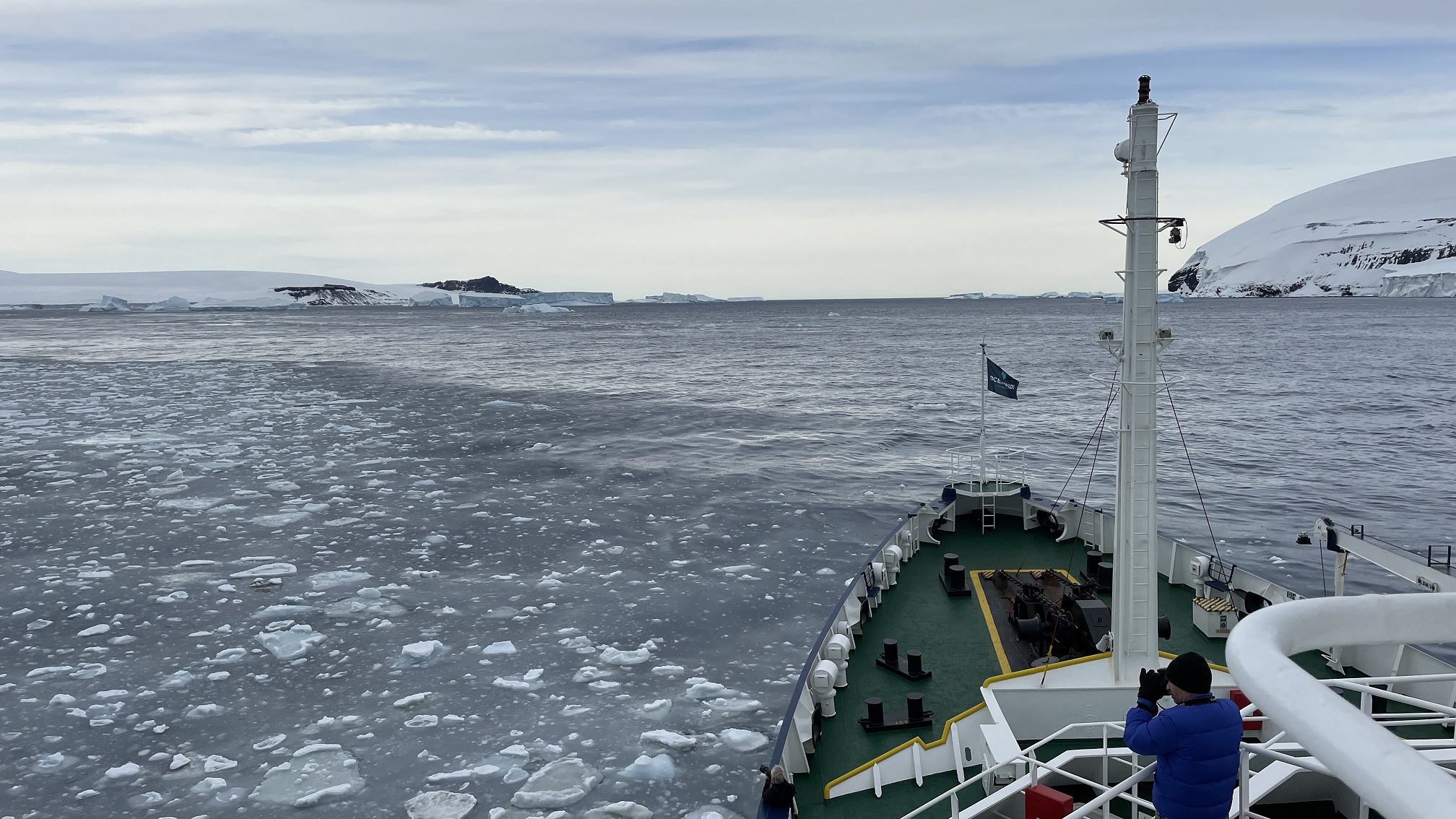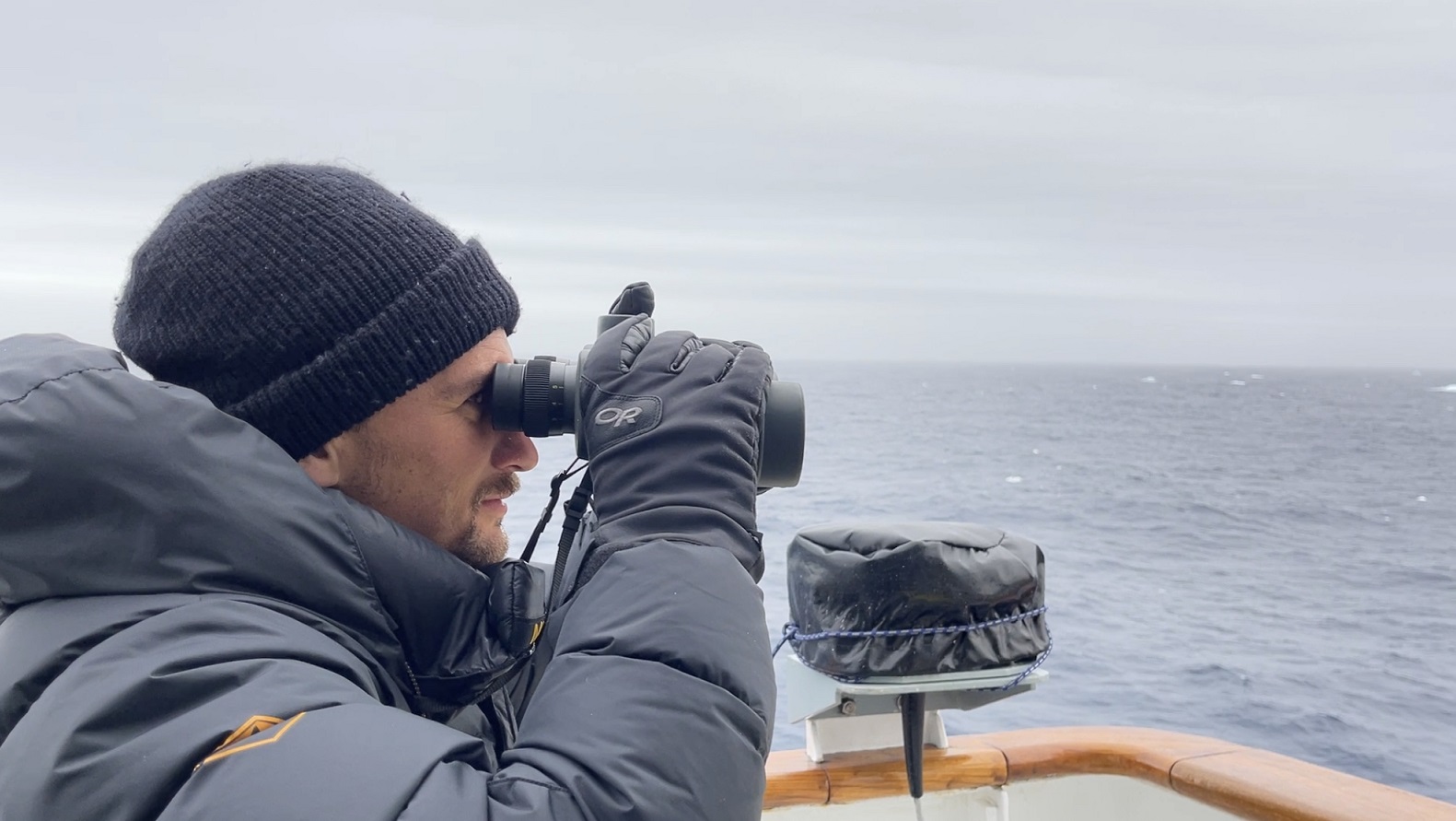
Scientists onboard Antarctic-bound tourist vessels have a unique opportunity to get up-close observations of baleen whales and, in the summer of 2022, they witnessed something remarkable. IMAS University of Tasmania PhD candidate Angus Henderson explains.
Dense sea-ice in Antarctica’s western Weddell Sea usually makes it inaccessible to all but small, agile and ice-loving Antarctic minke whales. But in the summer of 2022, our research team recorded humpback whales in the newly ice-free region for the first time – a poleward shift that’s an indicator of a warming climate.
Co-authors of the study published in Marine Mammal Science, Ted Cheeseman, Nadia Curcio and Maru Marcías recorded the observations from Ponant tourist vessels in December 2021 and January 2022.
 For the first time, they recorded humpback whales at the site of the infamous and alarming break-up of the Larsen-B ice shelf in 2002, a break-up that’s now become part of the annual cycle.
For the first time, they recorded humpback whales at the site of the infamous and alarming break-up of the Larsen-B ice shelf in 2002, a break-up that’s now become part of the annual cycle.
Incredibly, we have perhaps witnessed another step-change in environmental conditions, seeing firsthand how marine animals are responding to a changing climate.
Shifts in sea-ice can influence the distribution and density of prey species like Antarctic krill, and this in turn influences marine predators such as humpback whales that migrate to the Southern Ocean to get most of their annual energy needs during the summer months.
This winter, the usually ice-dominated western Weddell Sea is again experiencing remarkably low sea-ice conditions and this may transform it into a hotspot for humpback whales in the summer of 2024.

The changes we’re witnessing in top predator movement on their foraging grounds may indicate changes in prey distribution, but this extension of the humpback whale’s range and changing sea-ice conditions could also influence Antarctic minke whales. These are the smallest baleen whale species and partly rely on sea-ice habitat for foraging success.
Humpback and minke whales generally exploit different habitats, so this increasing overlap may cause declines in the minke whale population. For Humpback whales it remains unclear if this is an expansion of their overall range or shift further south.
We are also seeing climate-induced changes in human activity, as krill fisheries can move further south as sea ice levels fall. With all these changes happening faster than expected, and the Southern Ocean such a strong influence on the global climate, we really are skating on thin ice.

These observations are part of my PhD research, which explores a method for estimating the abundance and distribution (how many and where) of baleen whales in the Antarctica Peninsula region of the Southern Ocean. Our team explored the potential and benefits of this tourist ship-based observation and assessment method in a study published earlier this year in Frontiers of Marine Science.
Our team includes researchers from IMAS and the Centre for Marine Socioecology at the University of Tasmania, Southern Cross University (Australia), the National Institute for Fisheries Research and Development (Argentina), the Autonomous University of Baja California Sur (La Paz, Mexico), and the University of Auckland (New Zealand).
Images:
Published 11 October 2021